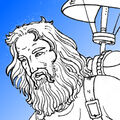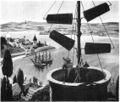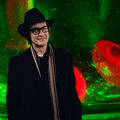Template:Selected anniversaries/March 2: Difference between revisions
No edit summary |
No edit summary |
||
| Line 23: | Line 23: | ||
||1840 – Heinrich Wilhelm Matthias Olbers, German physician and astronomer (b. 1758) | ||1840 – Heinrich Wilhelm Matthias Olbers, German physician and astronomer (b. 1758) | ||
||George Chandler Whipple (b. March 2, 1866) was an American civil engineer and an expert in the field of sanitary microbiology. His career extended from 1889 to 1924 and he is best known as a co-founder of the Harvard School of Public Health. Whipple published some of the most important books in the early history of public health and applied microbiology. Pic. | |||
||1880 – John Benjamin Macneill, Irish engineer (b. 1790) | ||1880 – John Benjamin Macneill, Irish engineer (b. 1790) | ||
Revision as of 15:25, 6 July 2018
1453: Doctor, astronomer, and astrologer Johannes Engel born. He will publish numerous almanacs, planetary tables, and calendars.
1478: Artist, inventor, and crime-fighter Leonardo da Vinci writes a letter to Johannes Engel, suggesting the need for an almanac of crimes against astronomical constants.
1791: Long-distance communication speeds up with the unveiling of a semaphore telegraph machine in Paris.
1911: Astronomer, physicist, and mathematician Arthur Eddington builds new type of scrying engine which detects and prevents crimes against mathematical constants.
1972: The Pioneer 10 space probe is launched from Cape Canaveral, Florida with a mission to explore the outer planets.
1997: Mathematician Jordan Carson Mark dies. He oversaw the development of nuclear weapons for the US military, including the hydrogen bomb in the 1950s.
2017: Famed gem detective Niles Cartouchian captures supervillain Fugitive Rubies.






